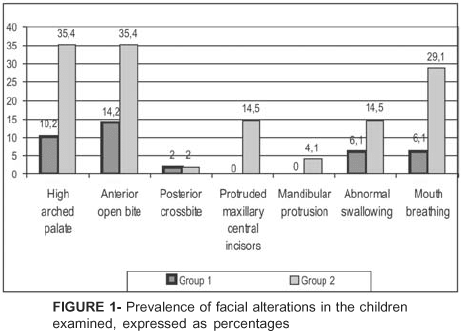This study compared the caries index (dmft), presence of sucking habits and facial alterations in children attended by the preventive program for infants and children assisted by spontaneous demand, at the same age, at the public sector of Maringá, PR. A total of 100 children were evaluated (1-6 years), who were divided into 2 groups: GI - children attended by the infant program with educational and preventive care and bimonthly follow-up, since the 1st year of age; GII - children assisted for conventional treatment (preventive and restorative) according to the needs, and follow-up as requested by the parents. Data collection was performed by interview with the parents and clinical examination for evaluation of the dmft and facial alterations. Analysis of data (Mann-Whitney test for dmft comparison and chi-square test for all other comparisons) demonstrated a significant difference (p<0.05) in relation to the dmft index (GI: 0.2; GII: 3.0), percentage of caries-free children (GI: 88%; GII: 57%) and non-nutritive sucking habits (GI: 47%; GII: 75%). The breastfeeding and bottle utilization practices were similar for both groups. Facial alterations were more frequently observed (p<0.05) in GII (48%) than GI (8.4%), especially for the variables (p<0.05) high arched palate (GI: 10.2%; GII: 35.4%), anterior open bite (GI: 14.2%; GII: 35.4%) and mouth breathing (GI: 6.1%; GII: 29.1%). It was concluded that the infant program is more effective than the spontaneous demand program, reaching the goal of oral health maintenance in the child population.
Oral health; Infant; Public sector; Dental caries; Malocclusions




